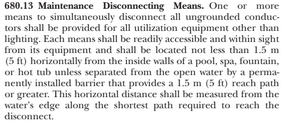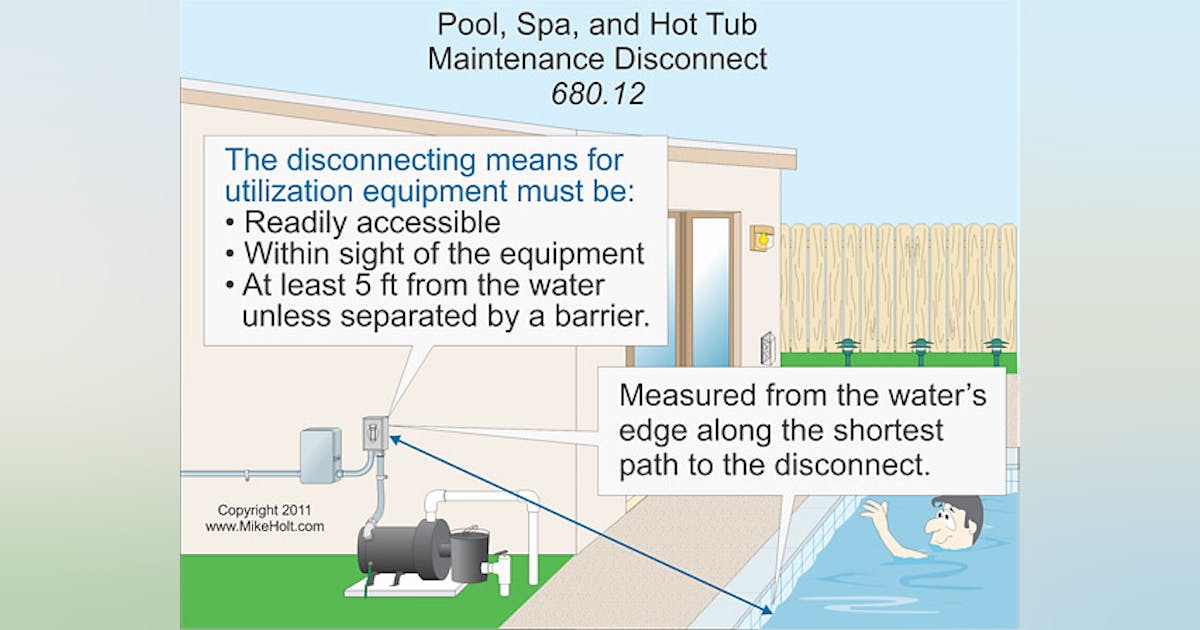RDspaguy
In The Industry
? Sounds like it's required to me.Maintenance Disconnecting Means: A maintenance disconnecting means is required . . . located in sight and at least 5 ft from the
As explained to me in IBEW code class circa 1993, fire safety is half of electrical code, and personal safety is the other. Wire/breaker sizing is fire safety, when you get down to it, since the wrong size wire on the wrong size breaker burns your house down. Limits on pigtail lenghts for drop-ceiling fixtures, anchoring, plenum ratings, wall perforations, termination/splicing, you name it. Electrical code is about safety, not just "best practices". Sure, a dedicated outlet for service at the panel is a convenience, but a disconnect (not a pump shutoff that does not turn off power to a device, it simply flips a switch on one leg of the pump to free an entrapped swimmer) within sight and fairly close, but not too close for personal safety, is not for convenience whatever it's called. That's why every major electrical appliance hard-wired outdoors is required to have one, not just a spa, and gfci protection has no bearing on it since they can fail, and the requirement predates gfci protection in any case.
Tell you what my friend, find an inspected AC compressor without one, and I'll consider the ridiculous proposition that they are not required by code in a residential installation, or are just a convenience for the handful of times it will be serviced. Ask your relative if it's optional on an AC unit too. I'll bet he has a different story then.
Thank you for providing me with fresh nightmare material, I was getting bored with the usual health inspection scenario.500 different building inspection departments




